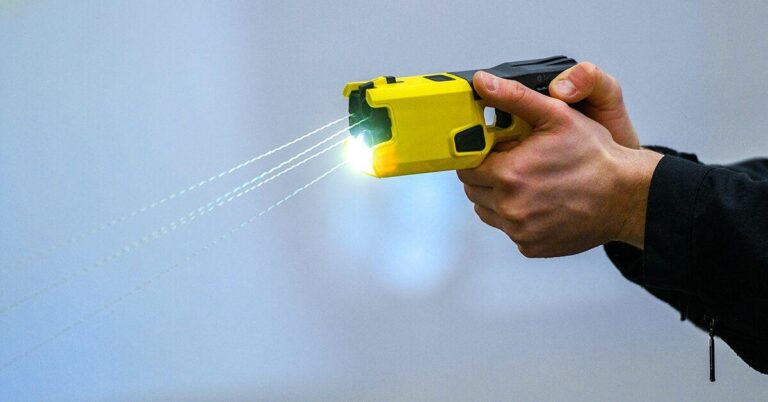Table of Contents
- Understanding the Relationship Between Temperature and Battery Chemistry
- Effects of Extreme Cold and Heat on Stun Gun Efficiency
- Optimizing Stun Gun Performance Through Proper Temperature Management
- Best Practices for Storing and Operating Your Stun Gun in Variable Climates
- In Summary
Understanding the Relationship Between Temperature and Battery Chemistry
Battery chemistry is inherently sensitive to temperature fluctuations, directly influencing the electrochemical reactions that generate power. At lower temperatures, the chemical reactions within the stun gun’s battery slow down significantly, which results in a noticeable decrease in voltage output and overall capacity. This means that the battery might exhibit shorter usage times and reduced performance when exposed to cold environments. Conversely, higher temperatures accelerate these chemical processes, sometimes increasing the battery’s power output temporarily. However, sustained exposure to heat can lead to accelerated degradation of battery components, causing irreversible damage and reducing its lifespan.
Understanding these dynamics is crucial for optimizing your stun gun’s reliability. Some practical considerations include:
- Storing batteries in a temperature-controlled environment to maintain optimal chemical stability.
- Avoiding extreme temperatures that can either slow down reaction rates or cause permanent battery damage.
- Regularly monitoring battery performance during seasonal changes to anticipate potential drops in efficiency.
By paying attention to these factors, users can significantly extend the functional life and ensure peak performance of their stun gun batteries regardless of external temperature conditions.
Effects of Extreme Cold and Heat on Stun Gun Efficiency
Extreme temperatures, whether bitter cold or scorching heat, can significantly hinder the performance of stun guns. In subzero conditions, the internal battery struggles to maintain its optimal voltage, resulting in decreased discharge power. Users may notice shorter stun durations or a complete failure to activate. Conversely, excessive heat can accelerate battery degradation and may cause internal components to overheat, risking permanent damage. Both extremes create an environment where the stun gun cannot deliver its maximum effectiveness, undermining its reliability in critical moments.
To mitigate these issues, proper handling and storage are crucial:
- Avoid exposing your device to direct sunlight or freezing environments for extended periods.
- Store stun guns in temperature-controlled areas to preserve battery integrity.
- Regularly test and recharge your stun gun to maintain optimal readiness, especially after exposure to extreme weather.
Optimizing Stun Gun Performance Through Proper Temperature Management
Maintaining an optimal temperature range for your stun gun is crucial to preserve its battery efficiency and ensure consistent performance. Extreme cold can cause the battery to discharge quickly, reducing the device’s operational duration, while excessive heat can damage internal components or lead to battery swelling. To combat these issues, store your stun gun in environments where the temperature remains stable, ideally between 15°C and 25°C (59°F and 77°F). Avoid leaving the device in direct sunlight, near heaters, or inside vehicles exposed to temperature fluctuations to minimize degradation risks.
When operating a stun gun in colder conditions, consider taking these measures to optimize performance:
- Warm up the device prior to use by keeping it close to your body or in an insulated case.
- Charge the battery fully before deploying the device outdoors in low temperatures.
- Limit exposure to excessively hot or humid environments during storage.
Best Practices for Storing and Operating Your Stun Gun in Variable Climates
When it comes to maintaining your stun gun’s peak performance, understanding how temperature influences its battery life is crucial. High temperatures can cause the battery to degrade faster by accelerating chemical reactions inside the cells, potentially leading to leakage or even permanent damage. Conversely, cold environments can reduce battery efficiency, resulting in diminished voltage output and reduced stun duration. To mitigate these issues, it’s essential to store your stun gun in a temperature-controlled environment, preferably between 50°F and 75°F (10°C to 24°C), and avoid leaving it in direct sunlight, vehicles, or freezing conditions for extended periods.
Operating your stun gun under variable climatic conditions also demands a few practical considerations to ensure reliability:
- Allow it to acclimate: If you move from a cold environment to a warm one (or vice versa), let the device adjust to room temperature before use to prevent condensation inside.
- Regular testing: Perform routine discharge tests to check if the battery voltage and stun power are operating efficiently, especially after exposure to extreme weather.
- Use protective cases: Invest in insulated carrying cases designed to buffer against rapid temperature changes during transport.
In Summary
In conclusion, understanding how temperature affects stun gun battery life and performance is crucial for ensuring your device functions reliably when you need it most. Extreme cold can reduce battery efficiency and runtime, while excessive heat may cause premature battery degradation or even safety risks. By storing your stun gun in a moderate environment and practicing proper maintenance, you can maximize its operational lifespan and readiness. Staying informed about these factors not only protects your investment but also ensures your personal safety remains uncompromised. Keep temperature considerations front of mind, and your stun gun will be a dependable part of your self-defense toolkit.Check Our Other Blogs
- StunGun – Your Trusted Source for Stun Guns, Laws, and Self-Defense Tips
- PepperSprayLaws – Your Trusted Resource for Pepper Spray Information
- StunGunLaws – Your Trusted Guide to Stun Gun Legality and Safety





